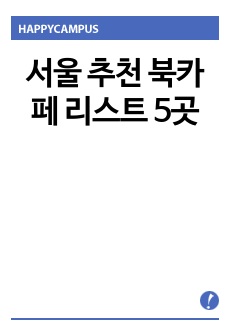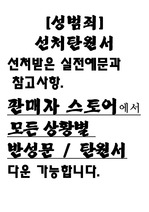[교육]학습자 중심의 수업의 성격과 적용방안
*길*
다운로드
장바구니
소개글
학교 수업이나 강의에 있어서 선생님이나 교수위주의 수업이 아닌 수업을 듣는 학생, 학습자위주 교육의 필요성과 학습자 위주수업의 계획과 전략을 소개하는 레포트입니다.목차
Ⅰ. 서론Ⅱ. 학습자 중심 수업의 이론적 논거
1. 인지적·구성주의적 학습 이론
2. 학습자 중심 수업의 성격
Ⅲ. 학습자 중심 수업의 계획과 적용
1. 학습자 중심 수업의 계획
2. 학습자 중심의 수업 전략
3. 학습자 중심 수업의 적용에 대한 논의
Ⅳ. 결론 및 제언
[참고문헌]
[Abstract]
본문내용
‘21세기의 세계화·정보화 시대를 주도할 자율적이고 창의적인 한국인의 육성’이라는 기본 방향을 설정하고 개발된 제 7차 교육과정은 ①건전한 인성과 창의성을 함양하는 기초·기본 교육의 충실, ②세계화·정보화에 적응할 수 있는 자기 주도적 능력의 신장 ③학생의 적성, 능력, 진로에 적합한 학습자 중심의 교육의 실천, ④지역 및 학교의 교육과정 편성·운영의 자율성 확대에 개정의 중점을 두었다(교육부, 1998). 이러한 개정의 방향은 우리의 교과교육의 전통과 21세기의 사회 변화에 따른 새로운 교육적 요구 등을 감안한 것으로서 ①국민 공통 기본 교육과정과 선택중심 교육과정 체제 도입 ②학생의 능력, 적성, 필요, 흥미에 대한 개인차를 최대로 고려하기 위한 수준별 교육과정의 도입 ③학생의 능력, 적성, 진로를 고려한 교육내용과 방법의 다양화 등을 그 특징으로 하고 있다. 이러한 제 7차 교육과정의 대표적인 특성은 ‘학생 중심의 교육과정’이라고 할 수 있다. 학생 중심의 교육이란 교육의 초점을 교육의 공급자인 교수나 교사가 아니라 학습자인 학생에게 두는 교육을 말한다. 학습자 중심의 교육은 지식의 폭발적 증가와 정보 변화의 가속화라는 최근의 사회적 흐름 속에서 전통적인 학교 교육의 한계를 극복하고 미래에 대비하는 학습의 의미를 강조하는 것이다. 제 7차 교육과정은 교과교육을 통해 학생들에게 축적된 결과로서의 지식을 전달하는데 주력할 것이 아니라, 학생들을 스스로 의미를 구성하는 주체적 학습자로 보고, 자기 주도적으로 학습하기를 기대하는 것이다. 제 7차 교육과정이 학생들의 활동, 다양한 경험과 직접 체험, 자기 주도적인 학습 등을 강조하는 것은 이러한 의미에서이다.참고 자료
권낙원(2000). 학습자 중심 교육의 성격과 이론. 한국교원대학교 교수논총, 16(1), 1-11.교육부(1998). 초등학교 교육과정 해설(Ⅰ). 서울: 대한 교과서 주식회사.
김인숙(2001). 통합교육과정의 발전과정 및 동향. 광주교육대학교 초등교육연구소 편, 초등 교과교육론. 서울: 양서원, 269-302.
장언효(1996). 수업설계의 인지심리학적 접근. 국민대학교 교육논총, 16(1), 47-67.
황윤한(1999). 교수-학습 이론으로서의 구성주의. 한국교원대학교 초등교육연구소 편, 구성 주의와 교과교육. 서울: 문음사.
Alexander, P. & Murphy, P.(1998). The research base for APA`s learner-centered psychological principles. In N. Lambert & B. McCombs (Eds.), How students learn: Reforming schools through learner-centered education. Washington, DC: American psychological Association.
American Psychological Association Board of Educational Affairs.(1995). Leaner -
centered psychological principles: A framework for school redesign and reform [On-line]. Available: http://www.apa.org/ed/lcp.html.
Bransford, J.(1993). Who ya gonna call? Thoughts about teaching problem solving. In P. Hallinger, K. Leithwood, & J. Murphy (Eds.), Cognitive perspectives on educational leadership. New York: Teachers College Press.
Brenner, M., Mayer, R., Moseley, B., Brar, T., Duran, R., Reed, B., & Webb, D.(1997). Learning by understanding: the role of multiple representations in learning algebr. American Education Research Journal, 34(4), 663-689.
Brown, A., & Campione, J.(1994). Guided discovery in a community of learners. In K. McGilly(Ed.), Classroom lessons: Integrating cognitive theory and classroom practice (pp.229-270), Cambridge: MIT Press.
Bruner, J.(1986). Actual minds, possible worlds. Cambridge, MA: Harvard University Press.
Cohen, E.(1994). Restructuring the classroom: Conditions for productive small groups. Review of Educational Research, 64, 1-35.
Dillion, J.(1987). Questioning and discussion: A multidisciplinary study. Norwood, NJ: Abelx.
Duffy, T. & Cunningham, D.(1996). Constructivism: Implications for the design and delivery of instruction. In D. Jonassen(Ed.) Handbook of research for educational communications and technology (pp. 170-195), New York: Macmillan.
Eggen, P. & Kauchak, D.(2001). Strategies for teachers: teaching content and thinking skills, Boston: Allyn and Bacon.
Eggen, P. & Kauchak, D.(1999). Educational Psychology: Windows on classrooms. Columbus, OH: Merrill.
Good, T. & Brophy, J.(1986). School effects. In M Wittrock (Ed.), Handbook of reaserch on teaching (3rd ed., pp. 570-604), New York: Macmillan.
Gronlund, N.(1993). How to make achievement tests and assessments. Needham Heights, MA: Allyn & Bacon.
Herman, J. L., P. R. Aschbacher, and L. Winters.(1992). A practical guide to alternative assessment. Los Angeles: the Regents of the University of California.
Hillocks, G.(1984). What works in teaching composition: A meta-analysis of experimental treatment studies. American Journal of Education, 93, 133-170.
Johnson, D. & Johnson, R.(1994). Learning together and alone: Cooperation, competition, and individualization (4th ed.). Needham Heights, MA: Allyn & Bacon
Kagan, S.(1994). Cooperative learning. San Juan Capistrano, CA: Resource for Teachers.
Kauchak, D. & Eggen, P.(1998). Learning and teaching: Research based methods
(3rd ed.), Needham Heights, MA: Allyn & Bacon.
Keislar, E. & Shulman, L. (Eds.).(1966). Learning by discovery: A critical appraisal . Chicago: Rand McNally.
Lefrancois, G. R. (2000). Psychology for teaching, Belmont, CA: Wadsworth/Thomson Learning.
Linn, M. & Burbules, N. (1993). Construction of knowledge and group learning In. K. Tobin(Ed.), The practice of construction in science education (pp. 91-119). Washington, DC: American Association for the Advancement of Science.
Martin, D. J.(2000). Elementary science methods: a constructivist approach, Belmont,
CA: Wadsworth.
McGilly (Ed.), Classroom lessons: Integrating cognitive theory and classroom
practice. Cambridge : MIT Press.
Ormrod, J. E.(2000). Educational Psychology. Columbus, OH: Merill/Prentice-Hall.
Oser, F.(1986). Moral education and values education: the discourse perspectives. In M. Wittrock(ed.), Handbook of research on teaching (917-941). New York: Macmillan.
Perkins, D. & Blythe, T.(1994). Putting understanding up front. Educational Leadership, 51, 4-7.
Presidential Task Force on Psychology in Education. (1993). Learner-centered psychological principles: guidelines for school redesign and reform. Washington, DC: American Psychological Association.
Resnick, L. B. & Resnick, D. P.(1992). Assessing the thinking curriculum: new tools for educational reform, in B. R. Gifford & M. C. O`Connor(eds.). Changing assessments: alternative views of aptitude, achievement, and instruction Boston: Kluwer Academic Publishers, 37-75.
Rhine.(1988)
Rogoff, B.(1990). Apprenticeship in thinking. New York: Oxford University Press.
Slavin, R.(1995). Cooperative learning: Theory, research, and practice. Needham Heights, MA: Allyn & Bacon.
Webb, N., & Fariver, S. (1994). Promoting helping behavior in cooperative small groups in middle school mathematics, American Educational Research Journal, 31(2), 369-395.


















![[교육]학습자 중심의 수업의 성격과 적용방안](/doc/cover/4249227/%EA%B5%90%EC%9C%A1_%ED%95%99%EC%8A%B5%EC%9E%90_%EC%A4%91%EC%8B%AC%EC%9D%98_%EC%88%98%EC%97%85%EC%9D%98_%EC%84%B1%EA%B2%A9%EA%B3%BC_%EC%A0%81%EC%9A%A9%EB%B0%A9%EC%95%88.jpg)






